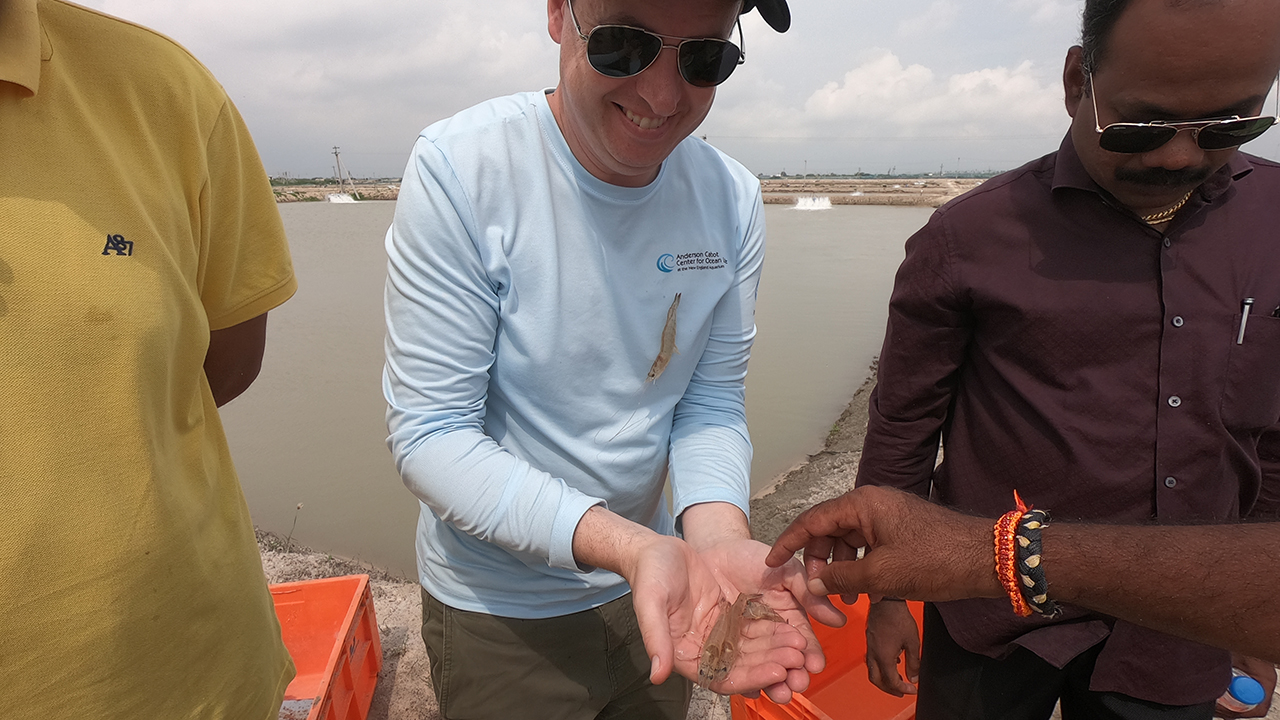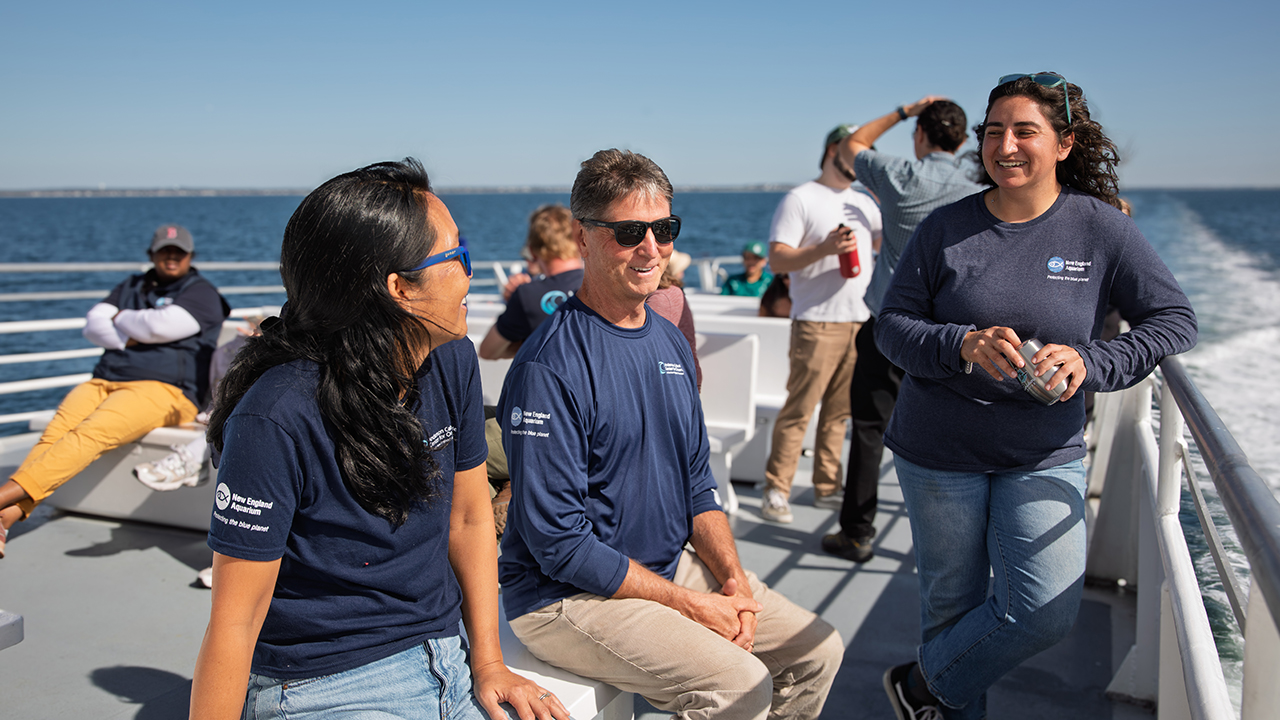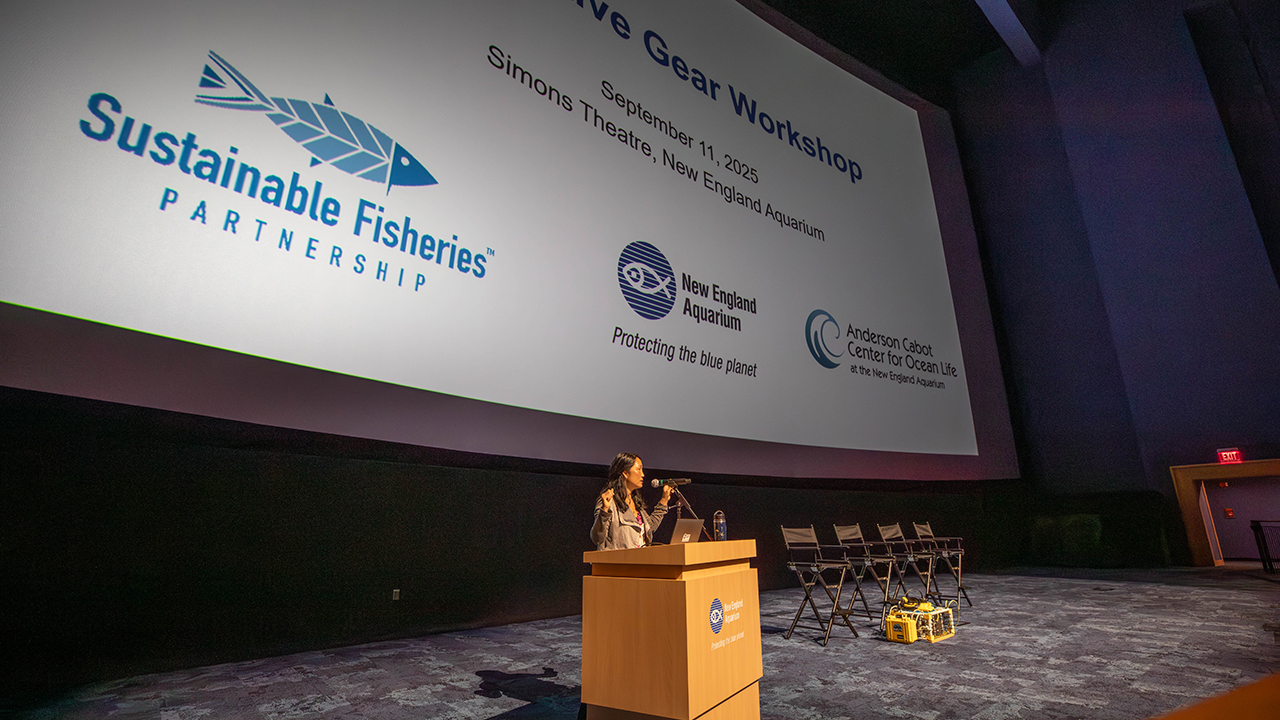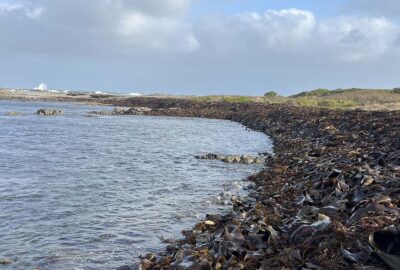A Q&A with BalanceBlue Lab Director Michelle Cho
In the BalanceBlue Lab, Michelle and team help guide businesses and decision-makers toward ocean-friendly solutions, ensuring that the blue economy can grow responsibly.
By New England Aquarium on Monday, November 17, 2025


The New England Aquarium’s BalanceBlue Lab (BBL) is going beyond research, drawing on the expertise of the Aquarium’s Anderson Cabot Center for Ocean Life to implement, and scale solutions that support ocean industry and ocean health. The lab advises and partners with businesses and decision-makers to help ensure that the blue economy—from seafood to shipping—can grow responsibly while safeguarding the ocean and all who rely on it.
As Director of the Lab, Michelle Cho brings more than eighteen years of experience researching the health and environmental impacts of commercial global fisheries and partnering with the seafood industry. Meet her here and learn more about her team’s work to translate science into practical solutions that support a healthy blue planet.

Can you tell me a bit about the history of BalanceBlue Lab? What kinds of work are you doing today?
Our work with the seafood industry started in 2000, when the New England Aquarium formed a first-of-its-kind partnership with a major supermarket chain to incorporate environmental responsibility into their seafood sourcing. Today, over 90 percent of retailers in the US and Europe have made sustainable seafood commitments, and most have partnered with conservation organizations in a similar fashion.
Over the last 25 years, the BalanceBlue Lab has partnered with over 15 seafood (and seaweed) companies, including retailers, importers and exporters, and leading restaurant and hotel chains.
The BalanceBlue Lab’s research team has almost four decades of combined experience, having conducted hundreds of environmental assessments on fisheries and aquaculture operations around the world using our own environmental performance assessment tools. We have also expanded our interests to include technological innovation in the ocean, particularly applications that can further conservation benefits for endangered species in fisheries and aquaculture operations, and other marine industries. To maximize conservation benefits, we like to frame all of this work into our vision for a healthy blue (ocean) economy by collaborating with our Conservation Policy team.
What role does the Lab play in advancing the Aquarium’s conservation goals?
We have positively influenced millions of metric tons of seafood and seaweed production through working directly with seafood industry collaborators, as well as improving seafood certifications and seafood policy. The BalanceBlue Lab balances ocean health with industry growth to have an environmentally responsible impact. We also translate ocean science into action, fulfilling our concept of an ocean “action” tank vs. “think” tank (vs. fish tank 😊).

Can you talk a bit about the advising work you and the team do with fisheries and other partners?
In 2025, the BalanceBlue Lab is collaborating with two seaweed purchasing companies (IFF and Roquette), the Marriott hotel chain, and are celebrating our 17th year in a collaborative partnership with Gorton’s Seafood.
For fisheries and aquaculture, we have developed environmental criteria with which we assess seafood sources. Some examples of these criteria are stock health, the way the fisheries are managed, what types of habitat damage and bycatch there are from the fishing and farming gears, what types of resources are in the feed, how disease and farm effluent are managed, etc. We take into account all of the information and form buying recommendations we share with the companies.
For the seaweed companies we work with, in conjunction with an international, external group of seaweed experts, we’ve developed what we call “Good Practices” that the companies can apply to all their seaweed sources, both farmed and wild. We’ve been working on bringing their sources into this program since 2020 and have observed these operations in person as part of their evaluations in Iceland, Norway, Australia, and Indonesia so far.

What are your goals in these relationships? Can you share any recent successes?
Our goal with all of these companies is for them to make incremental, continuous improvement that favors ocean conservation. We can keep moving the bar higher, without making progress seem unattainable. We began working with Gorton’s in 2008, and they were able to source 100 percent of their core seafood items from independent, third-party-certified farms and fisheries by 2018. We are working on improvements in their smaller, non-core items and also on some innovative projects by setting shorter-term milestones to long-term goals.
What does the Lab’s vision of a “vibrant blue economy” look like?
A “vibrant blue economy” is one that balances economic growth, innovation and technology, and job creation with ocean stewardship and sound science.
The BalanceBlue Lab has been working to establish ourselves as the ocean science experts that help industry prioritize marine conservation. We do that by ensuring marine conservation benefits are built into early stage, entrepreneurial startup business plans from the beginning, that investors are factoring marine conservation impact into their decisions, and that ocean science is seen as the foundation for decisionmaking about how our marine resources are utilized. We are already being consulted on decisions and policy in important areas such as marine technology and aquaculture, showing that our expertise, knowledge, and experience in these areas are being recognized.




